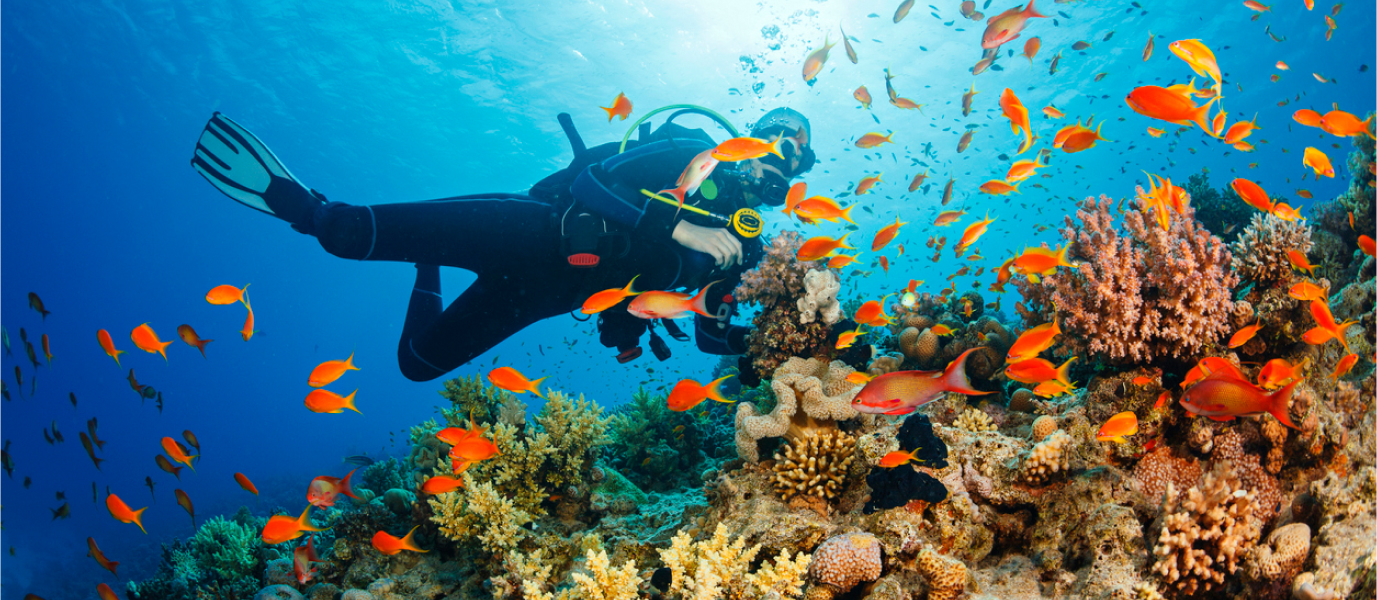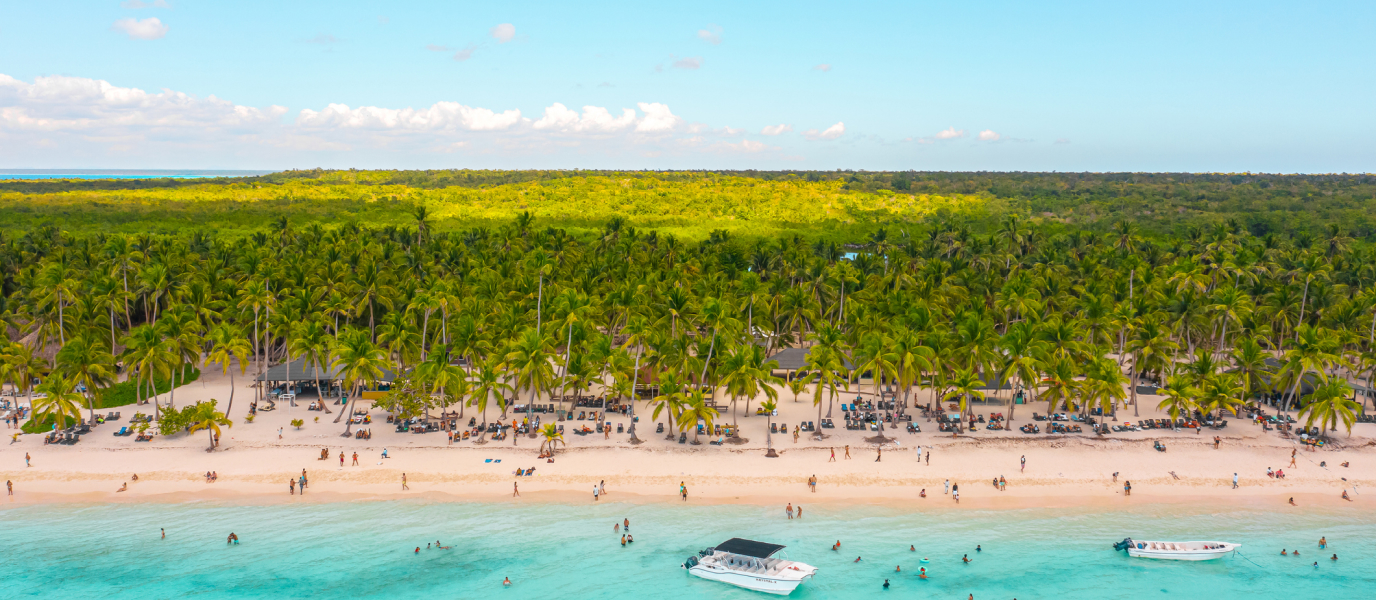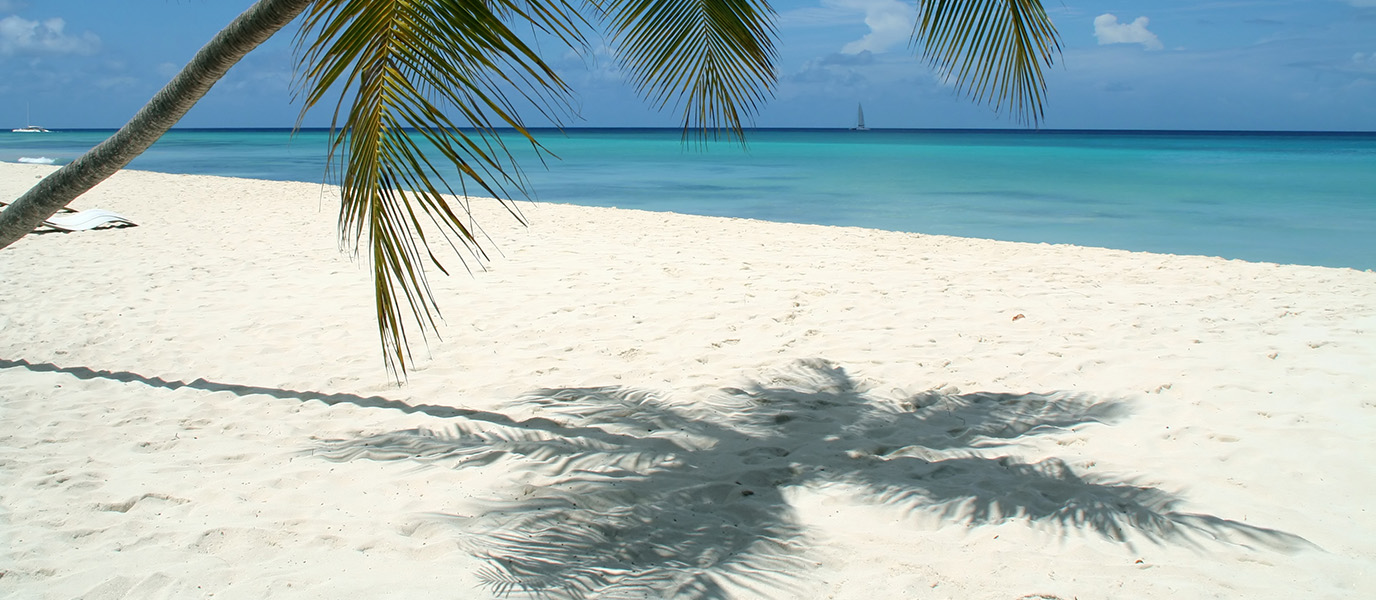Fabulous beaches, treasures from the country’s colonial past, the most vibrant fiestas, mouthwatering food… the Dominican Republic offers all kinds of experiences that make for a vacation you’ll remember forever. But if you think all you can see ‘on the surface’ is impressive, just wait, because you have yet to discover what can be found on the sea bed. Get ready for a day’s diving at Punta Cana—the amazing underwater experience!
Take crystal-clear waters at an ideal temperature for diving, add an infinite abundance of marine life, coral reefs, submerged galleons and other shipwrecks, awesome undersea caves and cliffs, as well as various companies specializing in diving at all levels of experience, and the inevitable result is the perfect destination for diving. In short, the coast of the Dominican Republic has everything you need to enjoy diving or snorkeling, whether you’re an absolute beginner or a complete expert.
In particular, the eastern part of the Dominican Republic (in other words, Punta Cana and the surrounding area) offers a vast array of great diving and snorkeling sites. With depths ranging from a minimum of 10 feet down to over 82 feet in some places, you can discover stunningly beautiful coral reefs and expanses of open water inhabited by barracudas, rays, puffer fish, seahorses and turtles—to name just a few of the countless marine species to be found here.
Not only that—along the Punta Cana coast there are several sunken vessels, including the Astron, a huge, 394-foot-long Russian cargo ship that foundered off the coast of Playa Bávaro in 1978. Or there’s the Enriquillo RM-22, a 144-foot, former US military vessel, which was deliberately sunk off the coast of Playa Blanca in 2006 in order to create an artificial habitat for marine life.
Other underwater attractions in Punta Cana include the Las Cuevitas and El Canal areas, with their incredible rock formations, and the area known as El Acuario [the Aquarium], a coral reef regeneration project bursting with life. But without a doubt, the most exotic attraction is the underwater museum known as the Museo Submarino Igneri Caribe Taíno. Created between Playa Blanca and Playa Serena, at a depth of between 10 and 23 feet, by the Dominican artist Thimo Pimentel, this is a unique cultural and snorkeling attraction, consisting of 35 submerged sculptures representing Tainos—the indigenous people of the Caribbean. These underwater art works have since become a habitat for all kinds of fish, and corals have also been ‘planted’ around them to encourage yet more new species to settle here. An utterly fascinating experience for both novices and advanced divers alike.
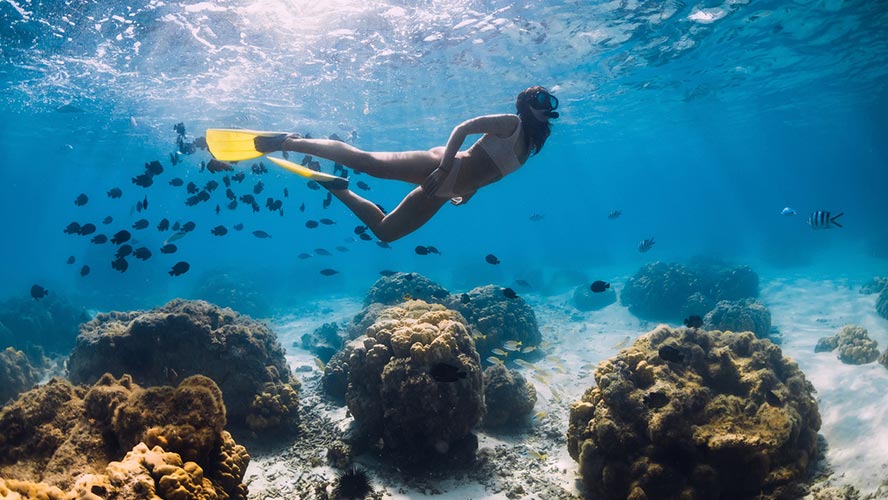
Diving on Isla Catalina, a dive pulsating with life
Another superb diving spot off the coast of La Romana, and not far from Punta Cana, is Catalina Island. This tiny unspoilt island, with its stunning white sandy beaches and its waters as calm as any millpond, offers fantastic opportunities for snorkeling, as well as for deeper dives. Some of the island’s undersea highlights include:
- The Catalina Wall [La Pared/El Muro de Catalina]. One of the most appealing sites for all levels of snorkeling and diving. This underwater wall starts off at a depth of 16 feet, plunging to over 130 feet, and offers a veritable explosion of marine life.
- The Catalina aquarium. This area, located 39 feet below the surface, and known as El Acuario [The Aquarium], is another spot teeming with life, from cute seahorses to elusive squid. Obviously, it’s no accident that it’s called El Acuario.
- Captain Kidd’s boat. In 2007, the wreck of the Quedagh Merchant (or Cara Merchant), the last ship captured by the infamous seventeenth-century English pirate Captain Kidd, was discovered at a depth of 66 feet, just off the coast of Catalina Island, where it had lain submerged for three centuries. The heavy cannons and their ammunition, together with the remains of the vessel itself, now make up an astonishing underwater museum.
The wreck of the St. George, a deep dive in Bayahíbe
The idyllic Caribbean Sea also has its dark side and over time, it has claimed its share of lives. From the arrival of the first Spanish galleons to the time of modern cargo ships and cruise liners, many vessels of all kinds have ended their days resting on the sea bed off the coast of the Dominican Republic.
One of the most famous is the St. George, a former cargo ship originating from Scotland, built in 1962 and measuring 240 feet in length. It was used to transport cereal products between Europe and the Caribbean. The ship was abandoned in the port of Santo Domingo in the mid-1980s, and was eventually deliberately sunk off the coast of Bayahíbe in 1999. Today, the St. George lies at a depth of around 130 feet, and is therefore only suitable for advanced divers. It is home to coral, sponges, shoals of tropical fish, barracuda, moray eels and grouper, among many other species.
Here’s a tip: If the St. George is too much for you, have a look at the Atlantic Princess, another sunken vessel in Bayahíbe. This small, 98-foot-long cruise ship lies between 20 and 40 feet below the surface, a depth at which you can see the wreckage just by snorkeling.
Diving on Saona Island, an underwater paradise
One not-to-be-missed excursion from Punta Cana is a visit to Saona Island. Discovering its beaches and unspoilt nature is a unique experience. However, an exploration of the sea bed takes that experience to another level.
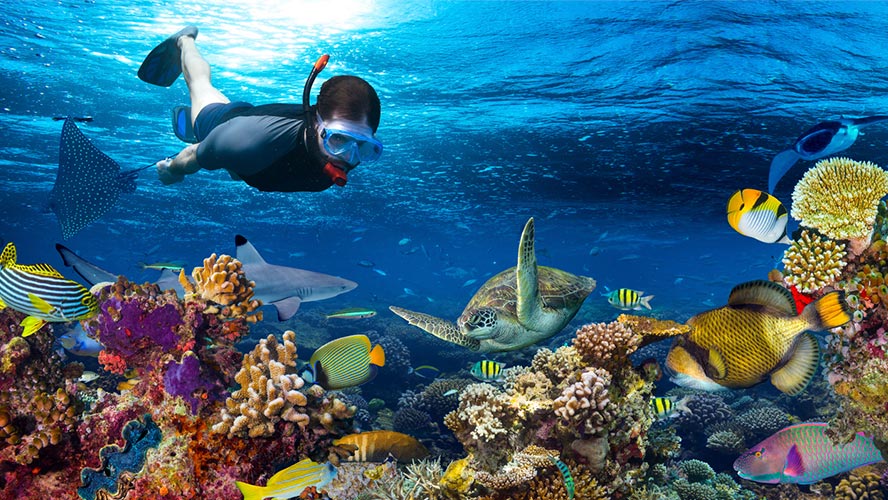
Most excursions to Saona Island include time to go snorkeling in nearby locations on the island, but if you want to enjoy the full underwater wealth of Saona Island—part of the Cotubanamá National Park—it is better to sign up for a specialist diving excursion, which will allow you to explore sites such as:
- La Parguera. One of the most popular leisure diving sites in the area, with an abundance of marine life.
- Peñón I and II. This area, with depths ranging from 30 to 108 feet, is home to species including snapper, grouper, turtles and rays.
- Punta Cacón. An area of shallow water. Its coral reefs are home to the typical Dominican lobster, which shelters from its predators among the coral.
- El Faro. A beautiful coral reef area, teeming with life, off the southern coast of Saona Island.
- Canal de Catuano. The perfect place to watch rays and catsharks resting on the sandy sea bed.
Here’s a tip: Saona Island is the most important nesting site for turtles in the Dominican Republic, so these wonderful animals are some of the best-known inhabitants of these waters.




































































